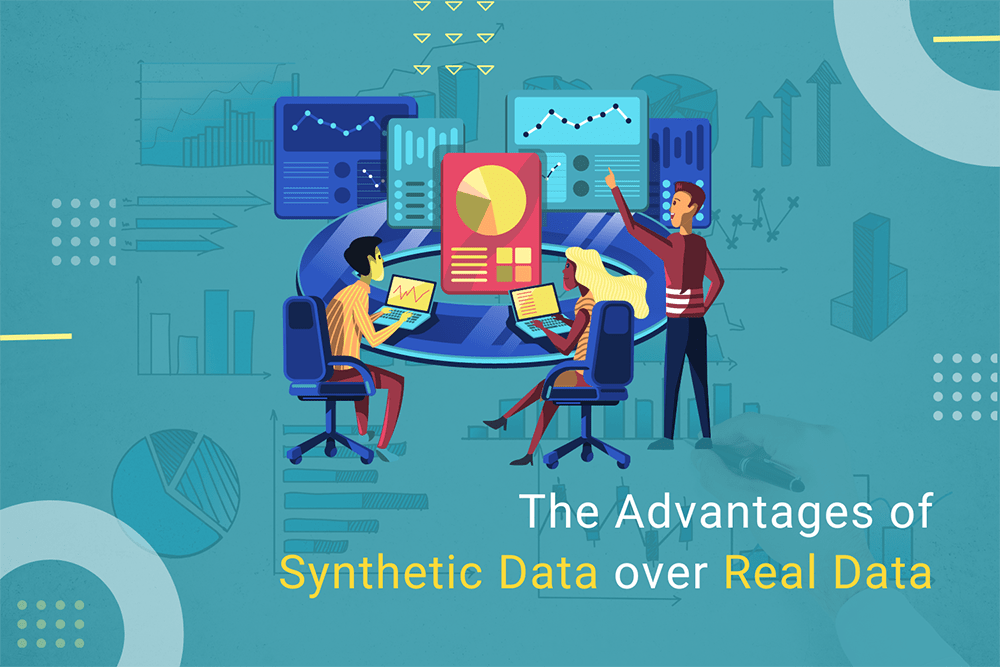Introduction
In 2020, artificial intelligence is all the rage, but many aspiring engineers are bumping across a stumbling block: training data.
Most artificial intelligence/machine learning applications require a big, vetted dataset. Obtaining that data is frequently difficult.
You must not only collect data from the actual world, but also annotate and prepare it for your model. Training data is a big barrier to overcome for students, small research teams, and early-stage enterprises.
This is where synthetic training data can help. Synthetic data is made-up information that appears to be actual data.
It is easier to produce synthetic data than it is to gather and annotate actual data for specific ML applications.
This is due to three key factors:
- You are free to produce as much synthetic data as you require.
- You can produce data that is potentially hazardous to acquire in real life.
- Annotation of synthetic data is done automatically.
Synthetic Data
One of the fundamental rules of machine learning is that a large amount of data is required. The number of data points required might range from 10 thousand to billions.
Collecting a large amount of high-quality training data for complicated applications like autonomous cars is difficult. Fortunately, synthetic data works best with huge datasets.
The most crucial thing to remember about actual training data is that it is collected in a linear fashion.
In most circumstances, collecting each successive training example takes roughly the same amount of time as the prior example. This is not true of manufactured data.
One of the characteristics that distinguishes synthetic data is its ability to be created in huge volumes. Millions of billions of synthetic data points might be produced. A billion real-world training examples, on the other hand, may be just unattainable.
Synthetic Data Vs. Real Data
Real-world data collection might be hazardous. For example, autonomous car AI cannot be completely based on real-world data. Simulations are required for companies developing on this technology, like as Alphabet’s Waymo.
Consider this: in order to teach an AI to prevent an automobile accident, training data on collisions is required. However, gathering massive datasets of real automobile wrecks is simply too expensive and risky—so you simulate crashes instead.
The advantages of Synthetic Data over Real Data
1. Real Data can be rare
The idea of risky collecting can also be applied to data that is gathered infrequently.
If your AI system is hunting for a ‘needle in a haystack,’ for example, synthetic data can provide unusual occurrences in sufficient quantity to correctly train an AI model.
Consider this: some of the most useful applications of AI are centered on ‘unusual’ events. Rare occurrences are difficult to acquire due to the nature of these issues.
Returning to the automobile example, car accidents are infrequent, and you rarely have the opportunity to collect this data. You may pick how many crashes to mimic using fake data.
2. Synthetic data is fully user-controlled
The concept of dangerous data collection can also be applied to seldom collected data.
If your AI system is looking for a “needle in a haystack,” for example, synthetic data can provide enough odd events to successfully train an AI model.
Consider this: some of the most valuable AI applications revolve on ‘strange’ events. Due to the nature of these challenges, rare occurrences are difficult to get.
Returning to the automotive example, car accidents are uncommon, therefore the chance to collect this data is limited. You may choose how many crashes to simulate using fictitious data.
3. Synthetic Data is perfectly annotated
Another advantage of synthetic data is that it is perfectly annotated. You’ll never have to collect data by hand again.
For each object in a scene, a variety of annotations can be created automatically. This may not seem like a significant problem, but it’s one of the main reasons why synthetic data is so inexpensive in comparison to actual data.
You do not have to pay for data labelling. Instead, the primary expense of synthetic data is the initial effort in creating the simulation. Following that, producing data is increasingly less expensive than genuine data.
4. Synthetic Data can be multispectral
Autonomous car manufacturers have recognized that annotating non-visible data is difficult. That is why they have been among the most vocal supporters of manufactured data.
Simulations are used by companies like as Alphabet’s Waymo and General Motors’ Cruise to produce synthetic LiDAR data. Because this data is synthetic, the ground truth is known, and the data is labelled automatically.
Similarly, synthetic data works well in computer vision applications using infrared or radar imaging, when humans cannot completely comprehend the imagery.


